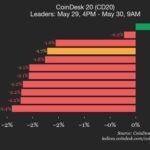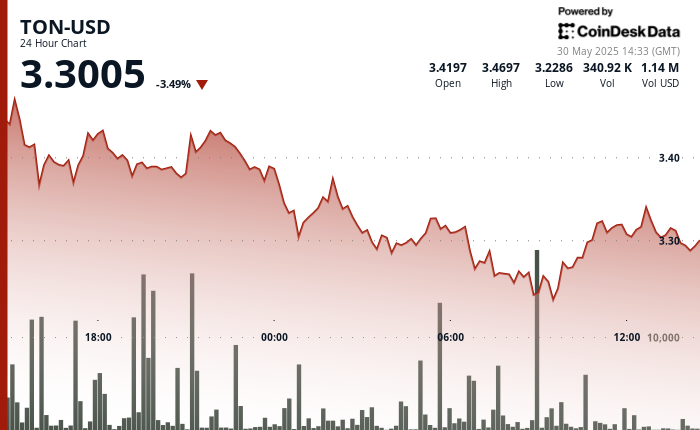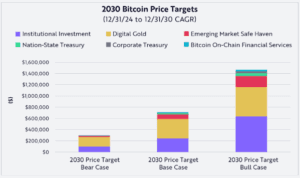
How Forgd Enhances Token Launch Procedures for Cryptocurrency Protocols
There is a methodology involved in launching a token.
This perspective comes from Shane Molidor, the visionary behind Forgd, a service that guides cryptocurrency projects in establishing their own tokens.
Molidor mentioned that launching a token has become significantly simpler with platforms like pump.fun, particularly popular among memecoin developers. He noted, however, that successfully launching a utility token that gains momentum is increasingly challenging due to a limited pool of attention from both retail and institutional investors.
Ultimately, the common goal of investors is to achieve favorable returns, but with a restricted pool of funds, many projects face a high turnover, Molidor explained.
Forgd offers free software tools for blockchain projects, assisting in tokenomics design, market maker engagement, exchange listing navigation, and initial valuation support.
After launching their tokens, these projects can continue utilizing Forgd’s analytics capabilities to monitor market makers, manage token unlocks, and enhance demand drivers for their tokens.
The firm also runs an advisory service to help large-scale projects reach their goals. Recently, Forgd has created a portal for other advisory firms, enabling them to streamline their portfolio management while offering market makers clear access to deal flow and performance metrics.
According to Molidor, more than 1,500 projects have utilized their software, with approximately half being research-focused, allowing users to familiarize themselves with the tools provided.
Typically, serious ventures, which Molidor refers to as “blue chips,” make use of the software while collaborating with an advisory firm—be it Forgd or its competitors.
In Molidor’s perspective, a “blue chip project” is characterized by substantial funding from venture capital and a token value around $100 million or more on prominent exchanges. He pointed out that several of the top 100 tokens by market cap originated from Forgd, although he chose not to disclose specific names.
Molidor emphasized the importance of transparency in standardizing the go-to-market approach. He finds it curious that protocol innovators are expected to master every aspect of market microstructure.
He further noted that many complexities in this launch process often remain opaque to everyone but industry insiders. Having been an insider himself, he has navigated these challenges.
### Unstable Launch Procedures
Forgd’s strategies are rooted in data analysis. For instance, when analyzing tokenomics, the firm evaluates recent launches, focusing on variables like token distribution, emissions, initial valuation, market performance, and trading volume.
This assessment extends to market makers, examining their order book shares, order fulfillment efficiency, and the competitiveness of their pricing. Consequently, when a project partners with Forgd for a launch, they can review a market maker’s prior performance metrics before formalizing an agreement.
Market conditions are dynamic; tactics that worked well for a project in late 2024 may not yield the same results by mid-2025. However, Forgd diligently updates its database with insights from every major launch.
Primarily catering to crypto-native enterprises, Molidor mentioned that they have also engaged with established institutions keen to understand the token launch process.
Molidor expressed that the current token launch paradigm—where assets often reach billion-dollar valuations shortly after introduction, fuelled by aggressive inflationary emissions—is not sustainable and necessitates transformation. Typically, demand tends to peak during the initial days or weeks, with investor focus quickly shifting to fresh projects.
He remarked on how, behind the scenes of major launches, initial trading values and price surges are often artificially inflated by exchanges or market makers, leaving projects with minimal control over their early market prices. Self-serving interests may drive these outcomes.
It’s common for projects to mismanage relationships with market makers, unintententionally positioning themselves such that market makers have incentives to boost prices dramatically.
To ensure ongoing demand in secondary markets, Molidor suggested that implementing certain structures could be beneficial. For instance, in traditional financing, firms going public secure institutional interest through assurances from underwriters; however, tokens usually attract speculative retail interest post-launch.
He proposed that investment structures could be adjusted to limit initial investments from institutions in primary markets while earmarking the remainder for secondary markets.
Molidor anticipated a shift akin to the developments seen during DeFi’s rise, suggesting we may soon see on-chain mechanisms designed to stimulate ongoing buy-side demand after token launches, possibly through yields generated in tokens or stablecoins, thereby lowering institutional cost bases.



















Post Comment